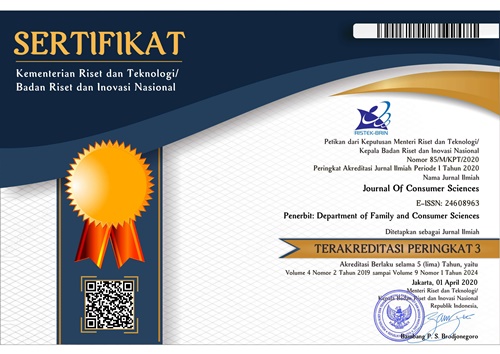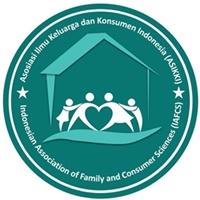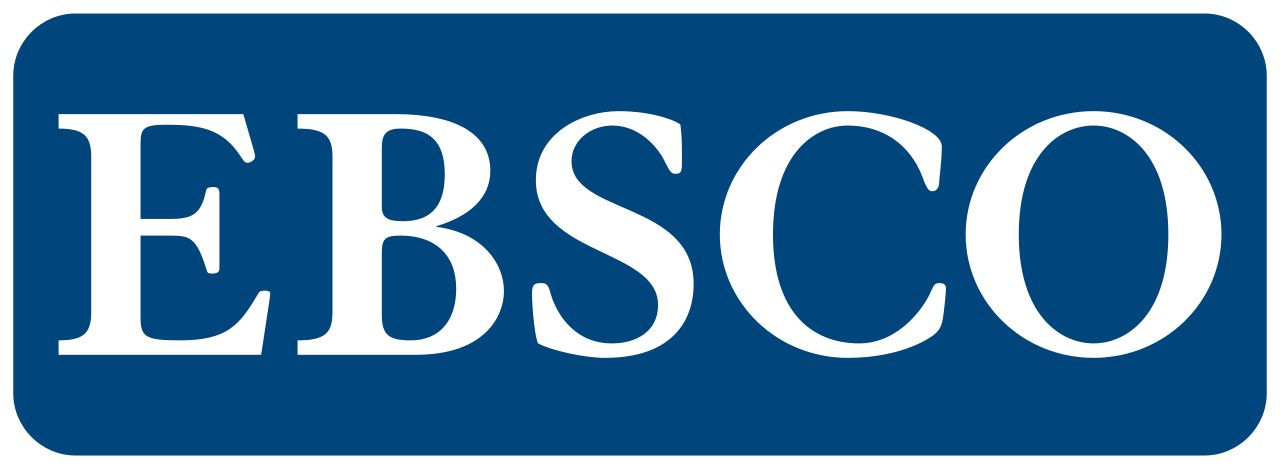The Effects of Financial Literacy and Self-Control towards Financial Behavior among High School Students in Bogor
Abstract
This research aims to analyze the effect of financial literacy and self-control on financial behavior among Bogor High School students. This research was conducted in two public high schools in Bogor, West Java, Indonesia, that were selected based on the level of passing grade of the school (high-grade and low grade). In collecting the data, this study used a self-administered questionnaire. About 113 of senior high school students from science and social majors were selected as the sample. This study found that financial knowledge and financial attitude were on a moderate level. High-grade school students tend to have better financial knowledge and attitude than those from low-grade schools. The results of this study also show that the self-control of students was classified as a low category. Those from low-grade schools were more likely to have better self-control compared to students from the high-grade school. Furthermore, financial behavior, which consists of saving and spending behavior, were categorized as poor. There was a significant difference in financial knowledge, financial attitude, and self-control among both schools. The financial attitude was positively significantly related to financial knowledge and behavior. Self-control was associated positively with financial behavior. Further analysis of multiple linear regression shows a positive and significant effect of financial attitude and self-control towards financial behavior.
References
Amagir, A., Groot, W., Brink, H.M., & Wilchut, A. (2017). Financial literacy of high school students in netherland: knowledge, attitudes, self-efficacy, and behavior. Tier Working Paper Series.
Ardiana, M. (2016). Self-control, family financial management education, knowledge of student financial inclusion have an effect on the saving behavior of vocational school students in Kediri. Journal of Educational Economics and Entrepreneurship, 4(1), 59-75. DOI: 10.26740/jepk.v4n1.p59-75
Atkinson, A., & Messy, F. A. (2012). Measuring financial literacy: results of the oecd / international network on financial education (infe) pilot study. OECD Working Papers on Finance, Insurance and Private Pensions. Paris: OECD Publishing
Baumeister, R. F. (2002). Yielding to temptation: self –control failure, impulsive purchasing, and consumer behavior. Journal of Consumer Research, 28(4), 670-676. https://doi.org/10.1086/338209
Calero, M. D., Garcia-Martin, M. B., Jimenez, M. I., & Kazen, M. (2007). Self-regulation advantage for high-IQ children: Findings from a research study. Learning and Individual Differences, 17(4), 328-343· DOI:10.1016/j.lindif.2007.03.012
Chen, H., & Volpe, R. P. (1998). An analysis of personal financial literacy among college students. Financial Services Review, 7(2), 107-128. https://doi.org/10.1016/S1057-0810(99)80006-7
Cobb-Clark, D. A., Dahmann, S. C., Kamhöfe, D. A., & Schildberg-Hörisch, H. (2019). Self-Control: Determinants, Life Outcomes and Intergenerational Implications. Bonn, Germany: IZA Institute of Labor Economics. Retrieved from https://papers.ssrn.com/sol3/papers.cfm?abstract_id=3427627
Efendi, R., Indartono, S., & Sukidjo. (2019). The mediation of economic literacy on the effect of self control on impulsive buying behaviour moderated by peers. International Journal of Economics and Financial Issues, 9(3), 98-104. https://doi.org/10.32479/ijefi.7738
Faidah, N., Harti., & Subroto, W. T. (2018). The influence of economic experience, self-control and student income on the economic behavior of high school students in Pasir Belengkong District, Paser Regency. Journal of Educational Economics and Entrepreneurship, 6(1), 59-82. Retrieved from https://journal.unesa.ac.id/index.php/jepk
Farhatilwardah, Hastuti, D., & Krisnatuti, D. (2019). Adolescent courtesy characters: influence of parental socialization methods and self-control. Journal of Family and Consumer Science, 12(2), 114 - 125. DOI:10.24156/jikk.2019.12.2.114
Fenton-O'Creevy, M., Dibb, S., & Furnham, A. (2018). Antecedents and consequences of chronic impulsive buying: Can impulsive buying be understood as dysfunctional self-regulation? Psychology and Marketing, 35(3), 175-188. DOI: 10.1002/mar.21078
Fitriani, N., Widodo, P. B., & Fauziah, N. (2013). The relationship between conformity and consumptive behavior in students in Genuk Indah Semarang. Undip Psychology Journal, 55-68. DOI: 10.14710/jpu.12.1.1-14
Gaurav, S., & Singh, A. (2012). An inquiry into the financial literacy and cognitive ability of farmers: evidence from rural india. Oxford Development Studies, 40(3), 358–380. DOI:10.1080/13600818.2012.703319
Hastings, J. S., Madrian, B. C., & Skimmyhorn, W. L. (2013). Financial literacy, financial education, economy outcome. The Annual Review of Economics, 5, 347-373. DOI:10.1146/annurev-economics-082312-125807
Huston, S. J. (2010). Measuring financial literacy. Journal of Consumer Affairs, 44(2), 296-316. DOI: 10.1111/j.1745-6606.2010.01170.x
Kanserina, D. (2015). The effect of economic literacy and lifestyle on the consumer behavior of students majoring in economic education, Undiksha 2015. Journal of Economic Education, 5(1). Retrieved from https://ejournal.undiksha.ac.id/index.php/JJPE/article/view/5213
Kim, J., & Chatterjee, S. (2013). Childhood financial socialization and young adults' financial management. Journal of Financial Counseling and Planning, 24(1), 61-79. Retrieved from https://www.afcpe.org/wp-content/uploads/2018/10/v24_1_61-79.pdf
Laily, N. (2013). The effect of financial literacy on student behavior in managing finances. Journal of Accounting and Business Education, 1(4). DOI: 10.26675/jabe.v1i4.6042
Lührmann, M., Serra-Garcia, M., & Winter, J. (2014). Teaching teenagers in finance: does it work? Journal of Banking & Finance, 54, 160-174.DOI:10.1016/j.jbankfin.2014.11.009
Lusardi , A. M., Mitchell , O. S., & Curto, V. (2009). Financial literacy among the young. Journal of consumer affairs, 44(2), 358-380. DOI: 10.1111/j.1745-6606.2010.01173.x
Mahdzan, N.S., & Tabiani, S. (2013).The impact of financial literacy on individual saving: an exploratory study in malaysia context. Transformation in Business and Economics, 12(1), 41-55. Retrieved from https://www.researchgate.net/profile/Nurul_Mahdzan/publication/275056695_The_Impact_of_Financial_Literacy_on_Individual_Saving_An_Exploratory_Study_in_the_Malaysian_Context/links/553202fd0cf27acb0deaaff9.pdf
Mandell, L. (2008). Financial literacy of high school students. In Xiao, J.J (Eds). Handbook of Consumer Finance Research (pp. 69-81). New York: Springer https://doi.org/10.1007/978-0-387-75734-6_5
Moon, C. S., Ohk, K., & Choi, C. (2014). Gender differences in financial literacy among chinese university students and the influential factors. Asian Women, 30(2), 3-25. Retrieved from http://e-asianwomen.org/xml/02242/02242.pdf
Muaddab, H. (2015). Factors that influence green consumption behavior in students of SMK Negeri, Jombang Regency. Journal of Education and Teaching Sciences, 2(2), 126-145. DOI: https://doi.org/10.17509/edusentris.v2i2.166
[OECD] Organisation for Economic Cooperation and Development. (2017). PISA 2015 Result (Volume IV): Students' Financial Literacy. Paris: OECD Publishing
[OJK] Otoritas Jasa Keuangan. 2016. Survei Nasional Literasi dan Inklusi Keuangan 2016. Retrieved from www.ojk.go.id.
Opoku, A. (2015). Financial literacy among senior high school students: evidence in Ghana (Master Thesis). Retrieved from http://ir.knust.edu.gh/bitstream/123456789/8511/1/ARMSTRONG%20OPOKU.pdf
Otto, P. E., Davies, G. B., & Chater, N. (2007). Note on ways of saving: mental mechanisms as tools for self-control? Global Business and Economic Review, 9(2), 227-254. DOI: 10.1504/GBER.2007.013703
[PRI] Policy Research Initiative. (2005). Why Financial Capability Matters. Synthesis Report, Prepared by Social and Enterprise Development Innovations for the PRI Project "New Approaches for Addressing Poverty and Exclusion". Report on "Canadians and Their Money: A National Symposium on Financial Capability". Ottawa, June 9-10, 2005 in Ottawa. Retrieved from https://www.canada.ca/content/dam/canada/financial-consumer-agency/migration/eng/resources/researchsurveys/documents/sedi-fcac_fincapability-eng.pdf
Potrich A.C.G, Mendes-da-silva W., & Vieira K.M. (2016). Development of a financial literacy model for university students", Management Research Review, 39(3), 356-376. DOI: 10.1108/MRR-06-2014-0143
Rajha, A. (2011). Knowledge, attitude, practice and satisfaction on personal financial management among the medical practitioners in the public and private medical services in Malaysia (Master Thesis). Retrieved from https://www.researchgate.net/profile/Anthony_Rajna/publication
Setiawati., & Nurkhin, A. (2017). Testing the dimensions of the student financial literacy construct. Economic Education Analysis Journal, 3(1), 727-736. Retrieved from https://journal.unnes.ac.id/sju/index.php/eeaj/article/view/20283
Shim, S., Barber, B. L., & Card, N. A. (2010). Financial socialization of first-year college students: the roles of parents, work, and education. Journal Youth Adolescence, 39, 1457–1470. DOI: 10.1007/s10964-009-9432-x
Sinaga, R. F. (2017). Analysis of the dominant factors influencing the selection of private schools for SMA level in Medan City. Jurnal Suluh Pendidikan FKIP-UHN, 4(1), 77-86. Retrieved from http://jsp.uhn.ac.id/wp-content/uploads/2018/03/09_Jurnal-Rani.pdf
Tangney, J. P., Baumeister, R. F., & Boone, A. L. (2004). High Self-Control Predicts Good Adjustment, Less Pathology, Better Grades, and Interpersonal Success. Journal of Personality, 72(2), 271-322. DOI: 10.1111/j.0022-3506.2004.00263.x
[UNICEF] United Nations Children's Fund. (2011). Adolescence: An Age of Opportunity. New York: UNICEF
Weaver, S. T., Moschis, G. P., & Davis, T. (2011). Antecedents of materialism and compulsive buying: A life course study in Australia. Australian Marketing Journal, 19(4), 247-256. https://doi.org/10.1016/j.ausmj.2011.04.007
Xiao, J. J. (2008). Applying behavior theories to financial behavior. In Xiao, J.J (Eds). Handbook of Consumer Finance Research (pp. 69-81). New York: Springer https://doi.org/10.1007/978-0-387-75734-6_5
Xiao, J. J., Chatterjee, S., & Kim, J. (2014). Factors associated with financial independence of young adults. International Journal of Consumer Studies, 38, 394–403. DOI:10.1111/ijcs.12106
Yeboah, A. P., Frejus, W. B., & Fianko, E. (2018). Financial literacy of undergraduate students: do personality traits and cognitive ability matter? International Journal of Accounting and Financial Reporting, 8(4), 533-554. DOI: 10.5296/ijafr.v8i4. 14012
Zahirovic-Herbert, V., Gibler, K. M., Chatterjee, S.(2016). Financial literacy, risky mortgages, and delinquency in the US during the financial crisis. International Journal of Housing Markets and Analysis, 9(2), 164-189. DOI: 10.1108/IJHMA-12-2014-0060
Authors who publish with this journal agree to the following terms:
- Authors retain copyright and grant the journal right of first publication with the work simultaneously licensed under a

This work is licensed under a Creative Commons Attribution 4.0 International License. that allows others to share the work with an acknowledgement of the work's authorship and initial publication in this journal. - Authors are able to enter into separate, additional contractual arrangements for the non-exclusive distribution of the journal's published version of the work (e.g., post it to an institutional repository or publish it in a book), with an acknowledgement of its initial publication in this journal.
- Authors are permitted and encouraged to post their work online (e.g., in institutional repositories or on their website) prior to and during the submission process, as it can lead to productive exchanges, as well as earlier and greater citation of published work (See The Effect of Open Access).











